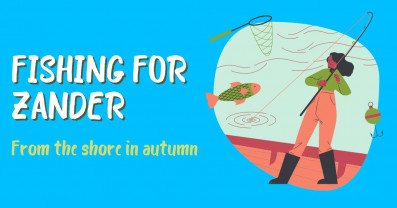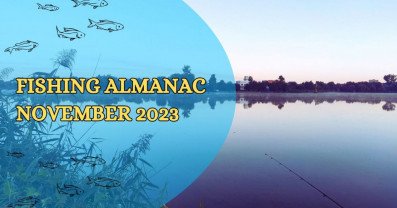Tides and Fishing: Understanding Nature's Dance
Fishing is a popular recreational activity enjoyed by millions of people around the world. It offers a great opportunity to relax, connect with nature, and catch some delicious fish. However, if you want to increase your chances of a successful fishing trip, it's essential to understand the role that tides play in fishing. In this article, we will explore the relationship between tides and fishing and provide you with some valuable tips to optimize your fishing experience.
Understanding Tides
What are tides?
Tides are the rise and fall of sea levels caused by the gravitational forces exerted by the moon and the sun on the Earth's oceans. The gravitational pull of the moon is primarily responsible for the tides, while the sun's influence is comparatively lesser.
Factors affecting tides
Several factors influence the intensity and timing of tides, including the alignment of the sun, moon, and Earth, as well as the shape of the coastline and the depth of the water. Understanding these factors can help fishermen predict the best times for fishing based on the tides.
The Influence of Tides on Fishing
Tides have a significant impact on fish behavior, as they affect the movement and availability of food sources. Different phases of the tide offer unique fishing opportunities. Let's explore how each tide phase affects fishing.

High tide fishing
During high tide, fish are often found closer to the shore, taking advantage of the increased water levels to access food sources that were previously unreachable. This makes high tide an excellent time for shoreline fishing or fishing from piers and jetties.
Low tide fishing
Low tide exposes new areas that are normally underwater, such as sandbars, tidal pools, and submerged structures. Fish tend to concentrate in these areas, making them more accessible to anglers. Fishing during low tide is ideal for targeting species that inhabit shallow waters.
Slack tide fishing
Slack tide refers to the period between high tide and low tide when the water is relatively calm and the current is minimal. While fishing during slack tide can be challenging due to the reduced water movement, it can present opportunities to catch certain species that are less active during strong currents.
Tips for Fishing During Different Tides
High tide fishing tips
- Use live bait or lures that imitate prey fish.
- Cast near structures like rocks, jetties, or submerged vegetation.
- Focus on areas where waves break, creating turbulence and attracting baitfish.
Low tide fishing tips
- Explore exposed areas like sandbars, tidal pools, and channels.
- Use lures that mimic small crustaceans or worms.
- Pay attention to drop-offs and deeper pockets where fish seek refuge during low tide.
Slack tide fishing tips
- Opt for finesse fishing techniques using lightweight tackle.
- Present your bait or lure subtly and enticingly.
- Target fish that are known to be less active during high or low tides.
Best Fishing Techniques for Different Tides
Surf fishing during high tides
When fishing in the surf during high tide, consider using longer fishing rods and heavier sinkers to cast your bait beyond the breaking waves. Look for troughs and rips where fish often gather to feed.
Deep-sea fishing during low tides
Low tide offers an opportunity to venture farther offshore for deep-sea fishing. Look for underwater structures, such as reefs or wrecks, where fish congregate. Use bottom fishing rigs or troll with artificial lures to target a variety of species.
Inshore fishing during slack tides
During slack tide inshore fishing, focus on areas near estuaries, creeks, or river mouths. These areas act as feeding grounds for fish seeking shelter from strong currents. Use bait that matches the local forage and experiment with different retrieval techniques.
Safety Considerations and Precautions
Tides and boating safety
If you plan to fish from a boat, it's crucial to be aware of the tide's effect on water levels and currents. Understand how tides can impact navigation, and always check tide charts and weather forecasts before heading out. Maintain proper safety equipment on board and inform someone about your fishing plans.
Tides and shoreline safety
When fishing from the shoreline, be mindful of rising tides that can cut off your retreat or strand you on a sandbar. Stay aware of the tide's progression and ensure you have enough time to safely return before the water level rises.
Weather conditions and tides
Keep in mind that weather conditions, such as strong winds or storms, can influence tides and create hazardous fishing conditions. Always prioritize your safety and reschedule your fishing trip if adverse weather conditions are expected.
Conclusion
Understanding the relationship between tides and fishing can significantly enhance your fishing experience. By considering the different phases of the tide and adjusting your fishing techniques accordingly, you can increase your chances of success on the water. Remember to prioritize safety and always check tide charts and weather forecasts before embarking on a fishing trip.
FAQs
Can I fish during any tide?
A: Yes, you can fish during any tide, but understanding how tides affect fish behavior can improve your chances of success.
How often do tides change?
Tides change approximately every six hours, with alternating periods of high and low tides.
Are there specific fish species that are more active during certain tides?
Yes, some fish species exhibit more activity during certain tide phases. Research the target species to optimize your fishing strategy.
How can I find tide charts for my fishing location?
Tide charts can be easily accessed online or through smartphone applications. Local bait and tackle shops may also provide tide information.
Can fishing during slack tide be productive?
While fishing during slack tide can be challenging, it can still be productive for certain fish species that prefer calmer waters.



